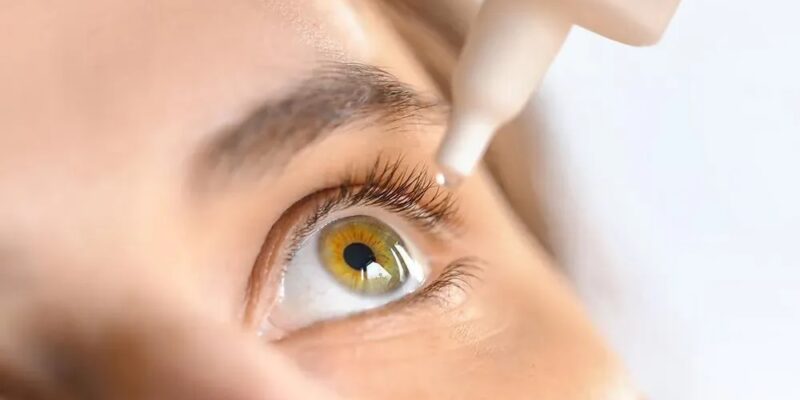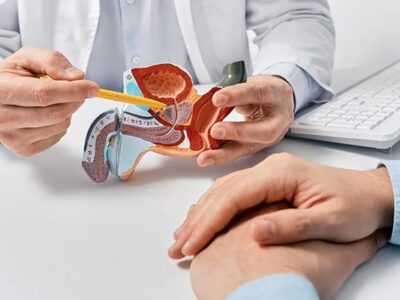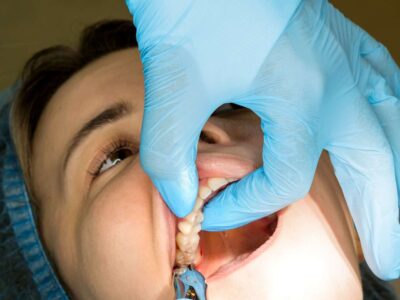Humans are able to see the world through the eyes. It is important to take care of the eyes by making sure to get regular eye examinations and to practise good eating habits along with an active lifestyle. There are many eye disorders that could lead to vision disturbances and a certain degree of discomfort. It is worth noting that certain eye problems occur due to the ageing process which means a person needs to live with the condition until they die. In this DoctorOnCall’s article, we will be learning about one of the common eye diseases found in clinical settings known as blepharitis.
Blepharitis is inflammation of the eyelid margins. Blepharitis is often presented as swollen, red and itchy eyelids. Obvious sign of a blepharitis is presence of flakes or oily particles/crusts wrapped at the base of the eyelashes. These may seem as dandruff-like scales such as those seen on hair scalp, except are found on the eyelashes. Blepharitis may occur either outside of the front edge of the eyelids where the eyelashes attach (anterior blepharitis) or at the inner edge of the eyelids which touches the eyeball (posterior blepharitis). Blepharitis may affect anyone at any age and of any gender. However, a person is at high risk for blepharitis if they have skin conditions such as rosacea, seborrheic dermatitis, allergies and poor hygiene including not removing cosmetic makeup properly from the face.
There are several causes leading to blepharitis. Most common one is the infection caused by bacteria. Although bacteria do exist naturally on the skin and the lids, some people may have more bacteria at the base of the eyelashes compared to other people or the lid area is prone to infection due to poor reaction towards the bacteria. This led to infection which is presented as the dandruff-like flakes. Another cause of blepharitis although is less common is present of allergies or over-population Demodex, a type of mites that typically lives inside the eyelash follicle. Last but not least, blepharitis can be caused by the improper oil production of the eyelid glands, specifically the meibomian gland which enables an optimum environment for bacteria to grow.
Common symptoms of blepharitis include itchy eyes, feeling burning or stinging of the eyes, watery eyes, eyelids “glued together” in the morning, red and swollen eye or eyelids and gritty eyes. Although in most cases it involves minor discomfort as mentioned just now, some may lead to severe symptoms such blurry vision, missing eyelashes, eyelashes that grow in the wrong direction and swelling of other parts of the eye such as cornea. Since symptoms of blepharitis may resemble other eye disorders, it is best to get medical advice when such symptoms are experienced. Even though blepharitis may be easily spotted with the presence of the dandruff-like flakes, usage of special instruments such as slit-lamp examination can help doctors to evaluate severity of the blepharitis.
The unique treatment about eye disorders, in the case of blepharitis, is in general not needing specific medication. The first thing to do when facing blepharitis is to use warm compress. This helps to loosen the flakes and prevent oil glands from clogging. After this, eyelid scrubs are done by using cotton swabs, a clean washcloth or lint-free pad (that has been soaked in baby shampoo and has been diluted in warm water). This should be done for 15 seconds. Lash scrubs can be used as eyelid scrubs for about 3-5 minutes, minimally twice a day. This scrubbing practice helps to remove accumulated oil from glands and follicle debris. Doctors may prescribe antibiotics in some cases that are unresponsive to prior weeks of eyelid hygiene. Eye drops such as steroid or artificial tears should only be used if it is prescribed or advised by healthcare providers. If blepharitis is caused by other health problems such as mentioned previously in risk factors, treating that underlying issues may improve blepharitis itself.
In essence, blepharitis is a form of inflammation to the eyes, specifically the eyelids area. It is often seen in the presence of flakes and/or oily particles wrapped at the base of the eyelashes. It is a disease that can affect anyone of any age with more risk for those with certain skin conditions. Although there are many causes of blepharitis the common one is bacterial infection. Since symptoms of blepharitis may be similar to other eye problems, it is best to get checked by a doctor. This ensures the patient receives the right treatment and reduces the unnecessary need for medication unless indicated by a doctor. If medication is given by doctors, patients need to make sure they understand how to use it properly. This means the right way of administering it and the right dose with frequency of using it. If a patient wants to buy eye drops or any medications used directly to the eyes, they should at least ask a pharmacist first before purchasing one but again, best to get advice from a doctor face to face.








Comments